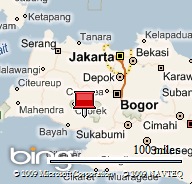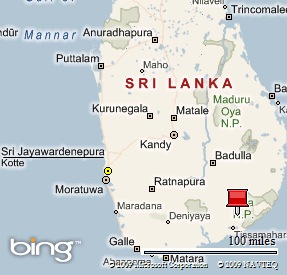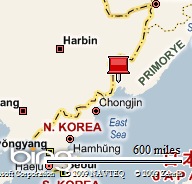by Michael
(London, UK)

Amur Leopard in captivity - photo by digitalART2
2010: This is a list of leopard subspecies. For completeness I have also included wildcats that have in their name the word “leopard” although these are different species of cat.
Taxonomy, the classification of species, is not set in concrete. A bit like the law, it evolves with improvements in knowledge. The IUCN Red List of Threatened Species™ (Red List) lists nine leopard subspecies (figures as at Oct 2009):
- African -- Panthera pardus pardus
- Arabia -- Panthera pardus nimr (not certain – small sample) – this subspecies is also considered “critically endangered” by th
e Red List. It was decided that this leopard is a subspecies from genetic analysis of a single cat. Overall population size of mature cats = less than 250. There are fragmented subpopulations of very small numbers (50). Habitat loss and fragmentation might be the biggest threats to survival in the wild. Its prey is hunted and it is killed by farmers in retaliation for killing livestock. These are common problems for nearly all the wildcats. The map shows the Dhofar mountains of southern Oman where the largest population is.
- Central Asia -- Panthera pardus saxicolor – genetics and appearance confirm this as a leopard subspecies. Its range is not fully understood. It is considered endangered by the Red List. Countries where is is found are: Iran, Afghanistan, Turkmenistan, Turkey, Armenia. This is not an all inclusive list. Population numbers are low, very low in some of these places (<10-13 in Armenia for example) and I am sure these are sometimes very rough estimates.
- Java -- Panthera pardus melas (not certain – small sample) – this leopard subspecies looks very different from leopards on the mainland Asia indicating that is has been a subspecies for a considerable time. There are believed to be less than 250 mature leopards in Java and its survival status is “critically endangered” (Red List). Population is declining. There are a number of national parks in Java. The red pin shows Gunung Halimun-Salak National Park where the leopard subspecies density is believed to be at one individual per 6.5 km² (Ario 2007)
- Sri Lanka -- Panthera pardus kotiya – the source population is thought to be leopards from the Indian sub-continent. This wild cat is considered endangered by the Red List. Reproducing leopards occupy (are
a of occupancy) about 11,000 km² less than 15% of the country. The best location for this leopard subspecies habitat is thought to be Block I of Ruhuna (Yala) National Park (red pin on map) because if is well protected and there is a good prey base. It is thought that there are over 800 leopards in Sri Lanka. The internal conflict with the Tamil Tigers may have impacted population numbers. Subpopulations are relatively small (below 250) and numbers are declining.
- Indian sub-continent -- Panthera pardus fusca
- Southeast Asia -- Panthera pardus delacourii
- Northern China -- Panthera pardus japonensis
- Russian Far East, Korean peninsula & NE China -- Panthera pardus orientalis – this is the leopard subspecies called the Amur leopard. It is very rare with very low populations indeed. Southwestern Primorye region of Russia pop = 14-20 adults. Many threats, the usual culprits such as habitat loss and fragmentation, all man made. The population is declining and not surprisingly it is rated as “critically endangered” by the Red List. It is extinct in China and the Korea. The map marks the area of its habitat – south-western Primorye region of Russia. This is also part of the Siberian tiger habitat.
Cats with “leopard” in their name (different species of wildcat):
- Sunda Clouded Leopard (see Clouded Leopard below)
- Clouded Leopard
- Snow Leopard
- Leopard Cat (Asian Leopard Cat)
From Leopard Subspecies to Wild Cat Species
Photo: creative commons - Attribution-Non-Commercial-No Derivative Works 2.0 Generic.





